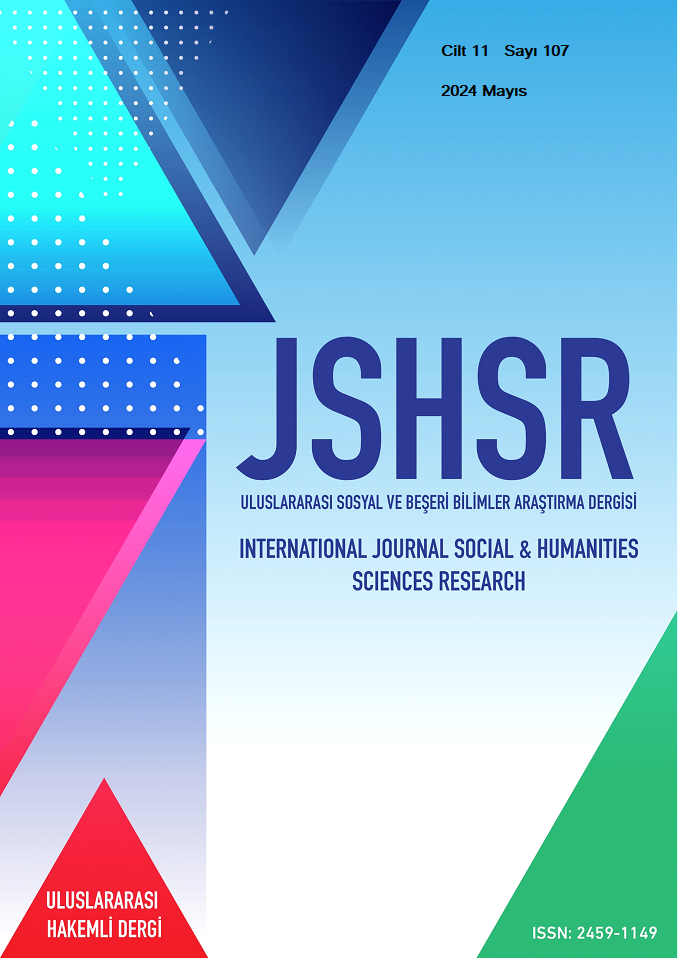Determinations On The Use Of The Baglama Instrument As Accompaniment In Folk Music Playing and Singing Practices: Ali Ekber Çiçek and Neşet Ertaş Example
DOI:
https://doi.org/10.5281/zenodo.11404147Keywords:
Folk music, playing and singing, accompaniment, baglamaAbstract
The tradition of playing and singing has an important place in the performance of folk music. Performers raised in line with the tradition of playing and singing such as minstrels, local artists and zakirs are important culture transmitters. Although the word is at the forefront, the instruments used for accompaniment have also taken their place in the performance tradition. Considering the geography of Turkey, it is seen that the baglama is widely used to accompany the lyrics. For this reason, this instrument has also played a role in cultural transmission. In addition, the playing styles of the bağlama have also had an effect on the emergence of the musical identity of the performed work. When the literature is examined, it is seen that there are not enough studies on how the bağlama accompanies the lyrics during playing and singing. These reasons were effective in the emergence of the research topic. In the study, the use of the baglama as an accompaniment instrument during playing and singing was tried to be understood through the examples of Ali Ekber Çiçek and Neşet Ertaş. These two performers were chosen because they come from two different performance cultures. Thus, it was thought that the analysis would be more comprehensive. While reaching the data in the study, a qualitative-descriptive research process was carried out by examining the studies on the subject. The performances of the sample pieces were accessed digitally and the pieces were notated over these recordings. The analyses were made on these notes and the study was limited to one piece sample from each of the two performers. In the analysis, the rhythmic, melodic and harmonic uses of the bağlama accompaniment were analysed. In addition, right and left hand playing techniques in bağlama performance were also tried to be determined.
References
Alpyıldız, E. (2012). Yerelden ulusala taşınan müzik belleği ve yurttan sesler. Milli Folklor Dergisi, 24 (96), 84-93.
Artun, E. (2015). Aşıklık geleneği ve aşık edebiyatı. Karahan Kitapevi.
Bars, M. E. (2015). Türk kültüründe rüya ve Battal Gazi Destanı’nda işlevleri. International Journal of Language Academy, 3 (6), 73-93. 10.18033/ijla.194
Çiçek, G. (2021). Aşık Daimî İsmail Aydın’ın icracı kimliği ve icra ettiği eserlerin metin/müzik bakımından analizi (Yayın No. 699512). [Yüksek Lisans Tezi, Haliç Üniversitesi]. YÖK Ulusal Tez Merkezi. https://tez.yok.gov.tr/UlusalTezMerkezi/
Duygulu, M. (1998). Alevi bektaşi müziğinde deyişler. Sistem Ofset.
Kızal, F. (2019). Adana merkez ilçelerindeki cemevlerinde Zakirlik geleneği (Yayın No. 602469). [Yüksek Lisans Tezi, Niğde Ömer Halisdemir Üniversitesi]. YÖK Ulusal Tez Merkezi. https://tez.yok.gov.tr/UlusalTezMerkezi/
Kobotarian, N. (2008). Tebriz aşıklık geleneği ve aşık edebiyatı (Yayın No. 217193). [Yüksek Lisans Tezi, Çukurova Üniversitesi]. YÖK Ulusal Tez Merkezi. https://tez.yok.gov.tr/UlusalTezMerkezi/
Köksel, B. (2012). 20. yüzyıl aşık şiiri geleneğinde kadın aşıklar. Akçağ Yayınları.
Öztürk, D. A. (2021). Saz (bağlama) için yazılmış solo çalgısal eserlerin kompozisyon stratejileri bakımından incelenmesi (Yayın No. 696298). [Yüksek Lisans Tezi, Ankara Müzik ve Güzel Sanatlar Üniversitesi]. YÖK Ulusal Tez Merkezi. https://tez.yok.gov.tr/UlusalTezMerkezi/
Savaş, A. (2019). Kırıkkale Yöresi Halk Türkülerinde Geçmişten Günümüze Yaşanan Değişimler Üzerine Bir İnceleme (Yayın No. 602075). [Yüksek Lisans Tezi, Kırıkkale Üniversitesi]. YÖK Ulusal Tez Merkezi. https://tez.yok.gov.tr/UlusalTezMerkezi/
Downloads
Published
How to Cite
Issue
Section
License
Copyright (c) 2024 INTERNATIONAL JOURNAL OF SOCIAL HUMANITIES SCIENCES RESEARCH

This work is licensed under a Creative Commons Attribution 4.0 International License.


